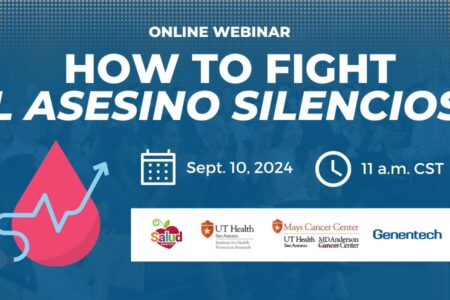
Share On Social!
USDA has approved a final rule to improve nutrition and support breastfeeding in food packages in the Special Supplemental Nutrition Program for Women, Infants, and Children (WIC).
The final rule includes these changes:
- Require WIC-eligible whole grain breakfast cereals contain a whole grain as the first ingredient.
- Increase access to whole grains in breakfast cereal, bread, and grains, including “tortillas made with folic acid-fortified corn masa flour (once available in the marketplace).”
- Expand whole grain options to include foods like quinoa, blue cornmeal, and teff to reflect dietary guidance and accommodate individual or cultural preferences.
- Provide more convenience and options in the dairy category, including flexibility on package sizes and non-dairy substitution options, such as plant-based yogurts.
- Include canned fish in more food packages.
- Require canned beans to be offered in addition to dried.
- Add more flexibility in the amount of infant formula provided to partially breastfed infants to support moms’ individual breastfeeding goals.
In 2023, over 15,000 people – including 135 from members of Salud America! at UT Health San Antonio in partnership with UnidosUs – submitted public comments to support these changes.
“The new WIC food package rule is based on strong scientific evidence. WIC remains one of the nation’s most successful, cost-effective public health nutrition programs,” said Dr. Amelie Ramirez, leader of Salud America! at UT Health San Antonio, in a news release.
The final rule will take effect within two years.
Let’s dive into the final rule and how this will impact Latinos.
What is WIC?
WIC is a federal food and nutrition program run by the USDA.
The program provides access to specific foods, as well as nutrition education and health and social service referrals, for low-income infants, children up to age 5, and women who are pregnant, breast-feeding, or postpartum.
WIC food “packages” allow participants to obtain foods that provide specific nutrients for pregnancy, growth, and development.
Why Are WIC Food Packages Being Revised?
Foods offered through WIC must align with the current Dietary Guidelines for Americans, which are revised every five years.
WIC food packages are evaluated every 10 years.
After several years of review and scientific study, USDA published a proposed rule in November 2022, seeking to promote nutrition security and maternal and child health.

The final rule will take effect within two years.
Changes to the vouchers, as follows, will take effect by June 2024:
- $26 per month for kids ages 1 through 4.
- $47 per month for pregnant and postpartum women.
- $52 for breastfeeding women.
“For the 6.6 million moms, babies and young children who participate in WIC – and the millions more eligible to participate – these improvements to our food packages have the potential to make positive, life-long impacts on health and well-being,” said Cindy Long, USDA Food and Nutrition Service Administrator.
How Will the Revised WIC Food Packages Impact Latinos?
More than 6.2 million women, infants, and children participate in WIC.
More than 40% of them are Hispanic/Latino, making WIC an important tool to advance health equity,” according to a blog post by Ramirez and USDA leaders.
“WIC participation rates are highest among WIC-eligible Hispanic and non-Hispanic Black individuals, and the previous updates to the WIC food packages were shown to help increase access to healthier foods for Hispanic and Latino WIC participants,” according to the USDA.
Similarly, WIC can play a role in improving maternal health for Latinas and all women.
“WIC participants, including those who are Hispanic/Latino, are more likely to have a more nutritious diet and better health outcomes, with participation tied to fewer infant deaths, fewer premature births, increased birth weights, and lower health care costs, according to research,” Ramirez said in a news release.
What Is One of the Main Changes to the WIC Food Packages?
The new changes require all breakfast cereals to meet the whole grain-rich standards that already apply to school nutrition programs and the Child and Adult Care Food Program.
Thus, all WIC-participating grocery stores would offer shoppers the choice to buy whole grain-rich cereals, which means “healthier food options to low-income, Latino neighborhoods throughout America, benefiting WIC participants and other families alike,” according to a Sept. 21, 2022, letter from UnidosUS and the Hispanic Federation to USDA Secretary Tom Vilsack.
“Latino parents care about their children getting the best nutrition possible to give them a healthy start in life. Once healthier options become available and parents learn about their value, Hispanic parents choose what is best for their children,” according to the letter.
“This happened the last time WIC nutrition standards were upgraded in 2009, requiring half of WIC cereal products to meet whole grain-rich standards. This gave Hispanic parents additional options, with WIC supplementing the foods that families could buy using other resources. When the WIC national standard improved, Latino parents purchased the new healthier options and Hispanic children rapidly experienced notable gains, including a 17% increase in fiber intake and a 10% decrease in the prevalence of childhood obesity among Hispanic toddlers enrolled in WIC.”
Explore details of the final rule here and stay up-to-date on additional information on changes with the WIC food packages here.
How to Promote Health Equity for All
These changes to WIC food packages are a big step in providing health equity, where everyone has a fair, just chance to be their healthiest.
This also demonstrates the power of submitting public comments on proposed federal rules and regulations. Participating in the rulemaking process lets federal officials know about the potential impact of their decisions, and also allows you or your organization to shape federal programs and rules, according to Unidos US.
You can take another step for health in your community.
Just download your town’s customized Health Equity Report Card from Salud America! at UT Health San Antonio.
The report card includes local maps and data visualizations on food and nutrition, food access, the percentage of population with SNAP Benefits, grocery store rate, and more.
Compare the results to other counties and states across the nation.
Share the information with local organizations and leaders to start important conversations and advocate for change in the community!
By The Numbers
1
Supermarket
for every Latino neighborhood, compared to 3 for every non-Latino neighborhood



